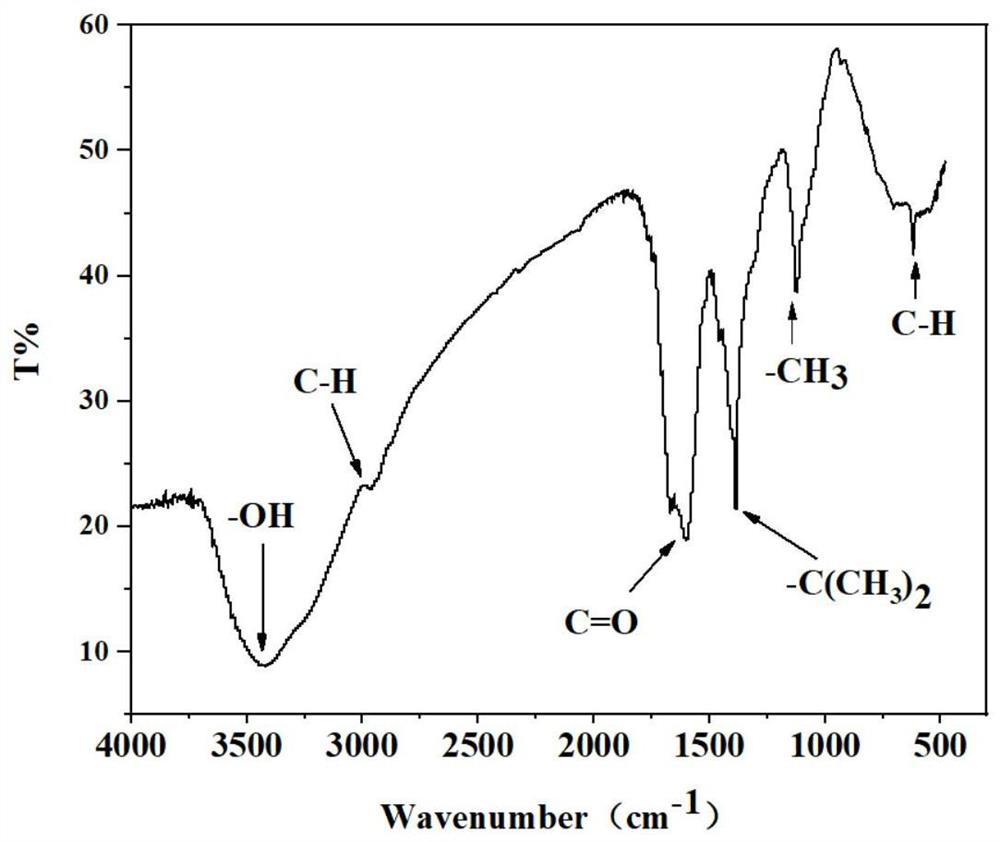Method for preparing fluorescent carbon quantum dots from alternanthera philoxeroides and detecting lemon yellow
A kind of technology of Neptera chinensis and carbon quantum dots, which is applied in the direction of fluorescence/phosphorescence, chemical instruments and methods, nano-carbon, etc., to achieve the effect of sensitive detection and high sensitivity
- Summary
- Abstract
- Description
- Claims
- Application Information
AI Technical Summary
Benefits of technology
Problems solved by technology
Method used
Image
Examples
Embodiment 1
[0041] Example 1: Preparation of Fluorescent Carbon Quantum Dots from Nitonia chinensis
[0042] This embodiment 1 provides a method for preparing fluorescent carbon quantum dots of A. japonicus, which specifically includes the following steps:
[0043] Preferably, a. Prepare a 1.5625g / L-25g / L Aquaphyllum japonicus solution, stir evenly with a glass rod, and transfer the solution to a reaction kettle; more preferably a 3.125g / L Aquaphyllum japonicus solution.
[0044] Preferably, b. put the reactor into an oven, and react at 150°C to 210°C for 6 to 16 hours; more preferably at 210°C, for 12 hours.
[0045]Preferably, c, after the reaction is completed, take out the reaction kettle, cool it down to room temperature naturally, filter the reaction solution through a circulating water vacuum pump to obtain a clear carbon quantum dot solution, then pass through a dialysis bag for dialysis purification, use a rotary evaporator to rotate, and then Drying to obtain the hollow plant f...
Embodiment 2
[0047] Example 2: Application of Fluorescent Carbon Quantum Dots of Nitonia chinensis in the Detection of Tartrazine
[0048] The fluorescent carbon quantum dot powder of A. japonicus prepared in the above-mentioned embodiment 1 is formulated into a 3.125g / L solution and added to solutions containing different tartrazine concentrations for fluorescence detection. According to the linearity between the detected fluorescence intensity change and the tartrazine concentration relationship, draw a standard curve (the whole detection result shows that tartrazine is linear in the range of 7.8~125μmol / L, and the correlation coefficient R 2 =0.9983);
[0049] Add the fluorescent carbon quantum dot solution of A. japonicus to the solution to be tested containing tartrazine for fluorescence detection, and obtain the change of fluorescence intensity;
[0050] Calculate the concentration of tartrazine in the sample solution to be tested by the standard curve.
[0051] In this example, th...
PUM
 Login to View More
Login to View More Abstract
Description
Claims
Application Information
 Login to View More
Login to View More - R&D
- Intellectual Property
- Life Sciences
- Materials
- Tech Scout
- Unparalleled Data Quality
- Higher Quality Content
- 60% Fewer Hallucinations
Browse by: Latest US Patents, China's latest patents, Technical Efficacy Thesaurus, Application Domain, Technology Topic, Popular Technical Reports.
© 2025 PatSnap. All rights reserved.Legal|Privacy policy|Modern Slavery Act Transparency Statement|Sitemap|About US| Contact US: help@patsnap.com



